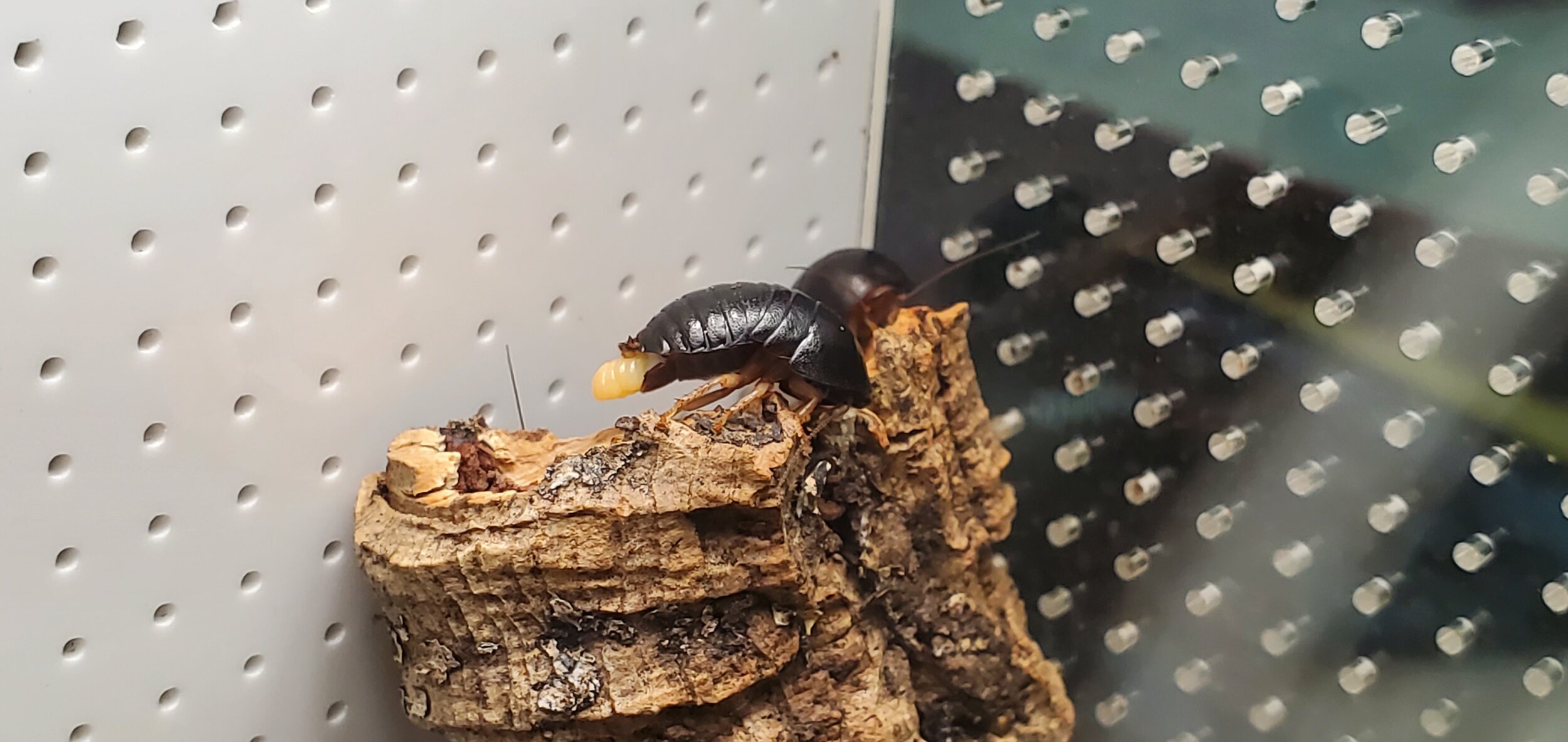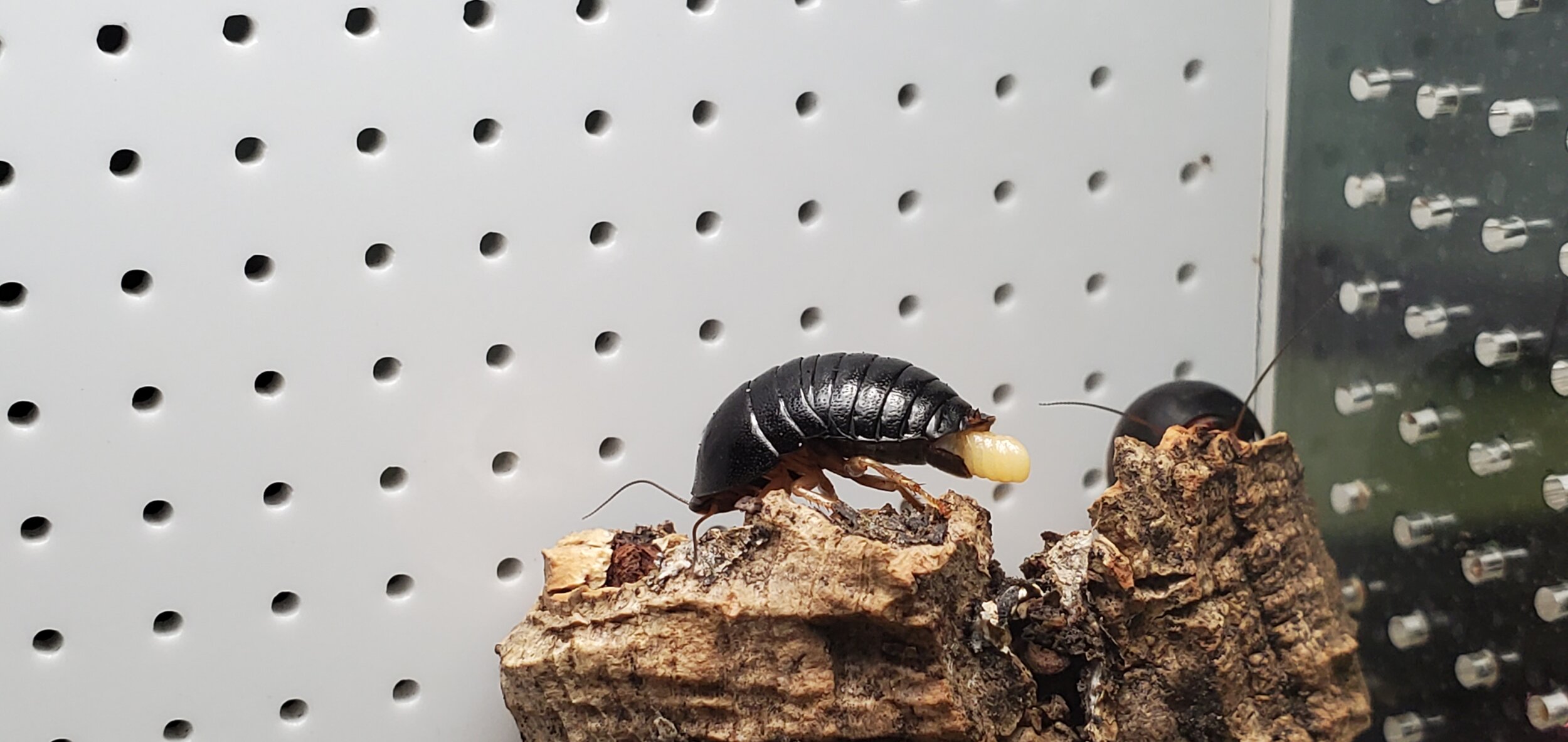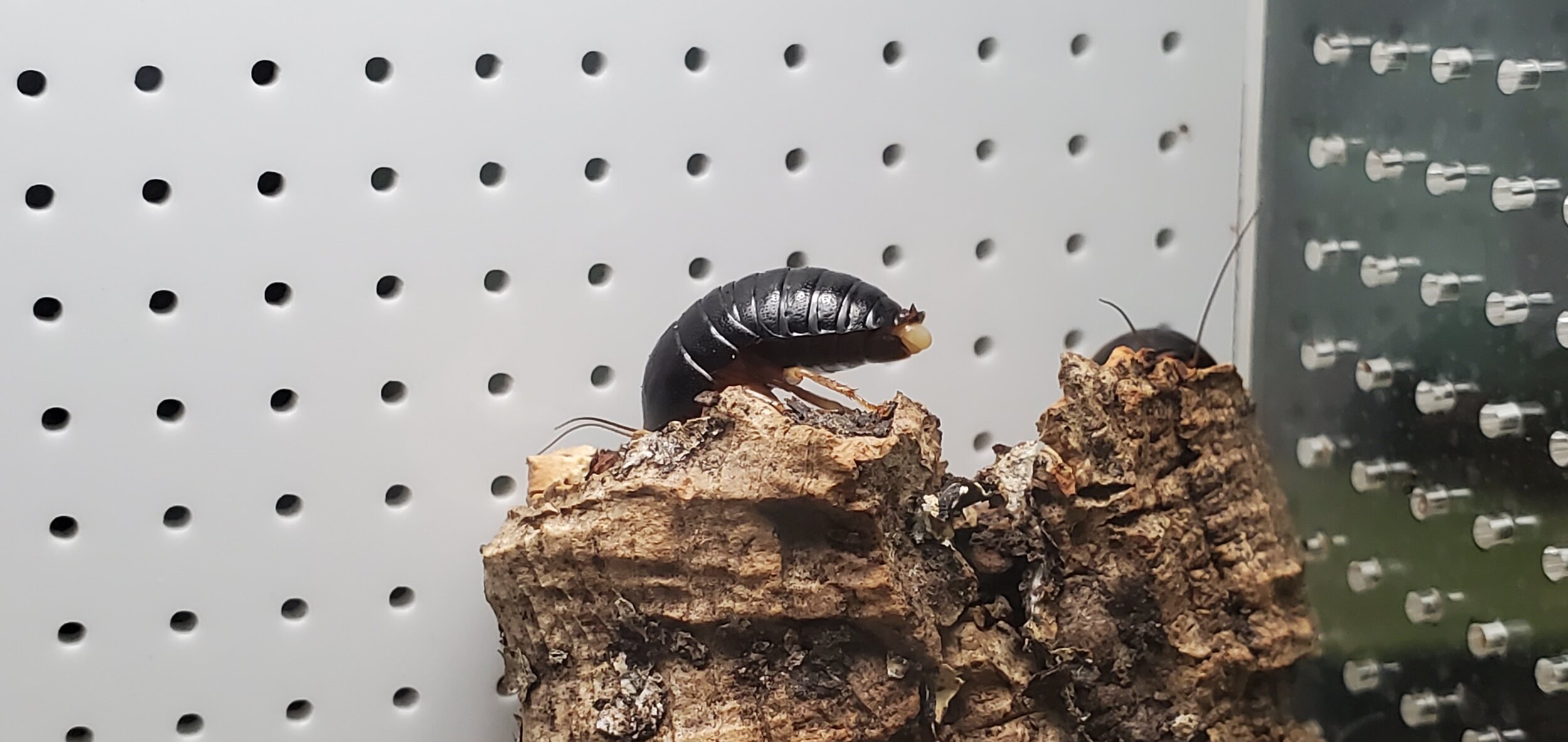The Pill Bug Cockroach
A special Thank You to Invertebrate Dude for helping identify this cockroach species!
Perisphaerus punctatus most commonly known as the Pill Bug Cockroach (American Cockroach Society), or in Chinese known as the Spotted Ball Cockroach (刻點球蠊). This species can and will roll into a small ball when threatened, hence the common name, Pill Bug Cockoach, because of its resemblance to isopods main defense mechanism.
Adult Female
Why P.punctatus? Well thanks to the precious help and experienced eye of the Invertebrate Dude, he managed to spot some differences between my photos of my males and females and his P.pygmaeus males and females, which I present to you now down below.
Golden setae present on the Adult Female as described on Rediscovered and new perisphaerine cockroaches from SW China with a review of sub familial diagnosis (Blattodea: Blaberidae)"
Research Paper Reference - “ventral abdomen with short yellow hairs…”
Adult Male - Notice the broad and convex pronotum
The distribution of this cockroach genus spans from the South (India), South-East (Myanmar, Thailand, Cambodia, Vietnam, Laos, Philippines, Malaysia, Singapore and Indonesia) to the East (China, Japan and Taiwan) regions of Asia.
The species itself, is only found in China and Vietnam.
Mostly tropical and sub-tropical regions of the world.
This is my report on the culture of some locally captured Perisphaerus punctatus individuals from South China, more specifically Macau Special Administrative Region (https://en.wikipedia.org/wiki/Macau).
1st March 2020, in one of my “anting” nights (looking for new ant queens), i found two of these small isopod looking cockroaches, one I was able to capture, the other one, escaped into the existing crevices.
It was my first locally caught cockroach species.
Small Nymph
Being extremely obsessed, i scoured the net, in search of more information on how to keep this species. Below I leave you some of the best references I managed to find:
For the Love of Cockroaches: Husbandry, Biology, and History of Pet and Feeder Blattodea - Book - Page 175 to 179
Invertebrate Dude Caresheets - Perisphaerus pygmaeus
Invertebrate Dude Blog - Perisphaerus pygmaeus
"Rediscovered and new perisphaerine cockroaches from SW China with a review of sub familial diagnosis (Blattodea: Blaberidae)" - Research Paper
Cockroach Species Files - Perisphaerus Genus
Cockroach Species Files - Perisphaerus punctatus
In the next 5 months, I managed to capture another 3 females and 1 adult male. And these 5 individuals lived together quite happily!
Adult Male and Female P.punctatus.
In P.pygmaeus, the females are significantly larger than the males.
During this period, I also researched and studied as much as i could about their husbandry. Most references pointed out that their ecology was terrestrial, but that was not what I was witnessing. The roaches didn’t congregate anywhere near the soil.
This observation was also consistent with the locations where I was finding the wild individuals. Either moving around on branches, or staying still on tree trunks and once observed eating tree sap.
So I ended up changing their enclosure few times, until I ended with an acrylic vertical enclosure, completely drilled with ventilation holes all around, with cork round pieces with likens attached, to serve as hiding places, and a very shallow substrate base.
Final Enclosure
The male ended up dying in the beginning of August of 2020 and I never witnessed any mating behaviors. According to Orin McMonigle’s “For the Love of Cockroaches”, the adult females only need to mate once for over one year of continuous reproduction.
And in the beginning of September, I was surprised by this unexpected sight
First Generation of captive bred roaches
Baby Nymphs!! 12 nymphs!!
Keeping next to their mother!! I tried to just keeping doing what I was doing, and avoid any extra stress... The nymphs are developing well, and have started to roam the enclosure.
Few days later the nymphs had darkened and were starting to get more bold and adventurous
On the 15th September 2020, I found another female transferring her ootheca from her egg sack to her brood sack for the second and final stage of the brood development, until they are ready to be delivered. These roaches also give live birth.
On the 12th October 2020, 27 days later, she gave birth to beautiful young lings!
Second batch of nymphs that this colony produced. 🥳
2nd Generation of captive bred cockroaches
The young lings like to hide themselves inside the bark crevices. Just adorable then they take a peak to smell something 😋🥰 like pollen pellets, turtle food pellets, banana and apple slices.
Today is 16th January 2021 and the colony has produced at least 4 generations of captive bred roaches. I estimate between 40 to 50 individuals overall.
Aren’t they the most adorable roaches ever??
Adult Female
Nymph
Hope you have enjoyed this introductory post of the Spotted Ball Roaches!
Let me know if you have any questions about them, I may have overlooked some husbandry aspects.
Let me wrap this post with two new punch lines I have for roaches:
1 - Taking Roaches from EEW to AWW !!
2 - Fighting for Roach Supremacy !!
Do you have any roach punch line?
Cheers!


